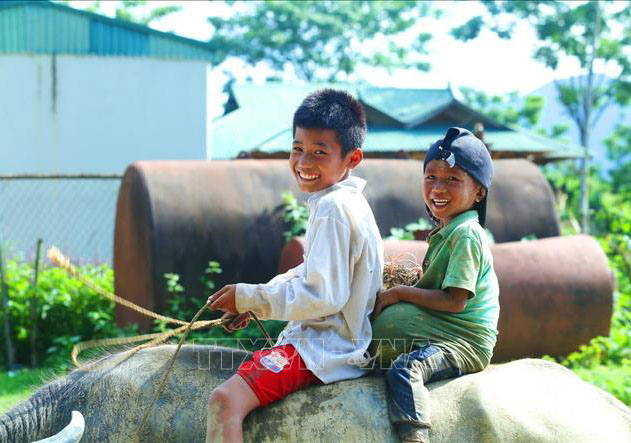HCMC – The rate of child labor in Vietnam is approximately 2 percentage points lower than the regional average for Asia and the Pacific, according to Vietnam’s second National Child Labor Survey launched late last week.
Conducted by the Ministry of Labor, Invalids and Social Affairs in coordination with the General Statistics Office with technical support from the International Labor Organization (ILO), the survey pointed out that an estimated 5.3% of the 5-17 year olds are engaged in child labor in Vietnam. This accounts for more than 1 million children, over half of them in hazardous conditions.
Child labor encompasses work that is detrimental to the physical or mental health of a child and negatively affects his/her schooling or development.
In line with global trends, 84% of the child labor in Vietnam is concentrated in rural areas and just over half of them work in the agricultural, forestry and fishery sectors. Other sectors where child labor is prevalent include the service sector and the industry and construction sector. Some 40.5% of the children work as unpaid family workers.
“Child labor tends to take place in informal household businesses further down manufacturing and production supply chains, which makes it difficult to detect. Vietnam’s increased participation in global trade compels Vietnamese businesses to ensure that their supply chains are free from child labor in order to compete in the global market,” ILO Vietnam Director Chang Hee Lee said.
In addition to the health and safety risks of long hours of work, the survey highlights the adverse impacts of economic engagement on the school attendance of children, with the percentage of children in school decreasing as the intensity of economic engagement rises.
Although survey findings indicate promising signs of progress, the risk of child labor has now been intensified by the socio-economic impacts of Covid-19. More families are being forced to resort to child labor as a strategy to cope with the loss of income and livelihood constraints resulting from disruptions to global supply chains and social distancing measures.
ILO suggested that actions should be taken in a timely manner to mitigate the detrimental effects of the pandemic, which risk hard-won gains in combating child labor and may lead to a rise in new cases.
To meet this challenge, the Vietnamese Government has developed a roadmap toward target 8.7 of the Sustainable Development Goals in conjunction with the country’s upcoming National Action Plan to prevent and reduce child labor for the 2021-2025 period.











